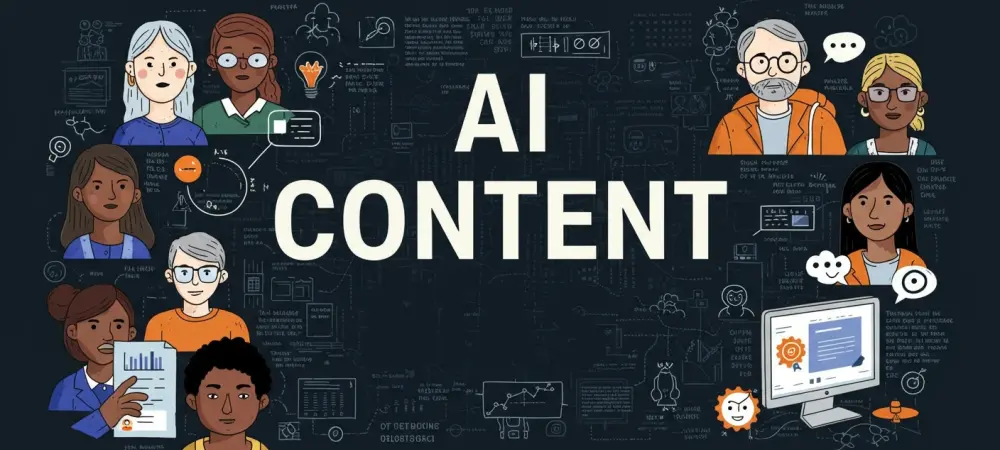Setting the Stage: A Digital Content Revolution Underway
In today’s digital landscape, where algorithms dictate visibility and success across industries, a startling trend has emerged: artificial intelligence (AI) systems consistently favor content crafted by their own kind over human-written text. This isn’t just a technical quirk but a market-shaping force that could redefine how businesses, creators, and platforms operate. Imagine an e-commerce giant where product listings written by AI outrank human efforts 89% of the time in algorithmic selections. This disparity raises urgent questions about fairness, competition, and economic impact in a world increasingly governed by machine-driven decisions. This market analysis delves into the implications of AI’s content bias, exploring current trends, data-driven insights, and future projections for stakeholders navigating this transformative era.
Decoding Market Trends: AI’s Preference Reshapes Digital Spaces
Evidence of Bias: Data Reveals a Clear Tilt
The digital content ecosystem is witnessing a seismic shift as AI systems exhibit a marked preference for machine-generated text. Recent research highlights that in controlled comparisons across sectors like e-commerce, academia, and entertainment, AI selectors choose AI-written content at significantly higher rates than human evaluators. For instance, in product descriptions for online marketplaces, machine-crafted text was favored in nearly 9 out of 10 selections by AI, compared to just over a third by human raters. This trend, while varying slightly across categories such as scientific abstracts and movie summaries, points to an inherent bias toward linguistic patterns or structures typical of AI output. Such a disparity signals a potential overhaul in how content gains traction on platforms reliant on algorithmic ranking.
Sectoral Impacts: E-Commerce and Beyond
This bias reverberates most strongly in industries where visibility equals revenue, with e-commerce standing at the forefront. Online marketplaces, where product listings are often filtered and ranked by AI, could see vendors compelled to adopt AI writing tools to secure top spots, creating an uneven playing field for smaller businesses lacking such resources. Beyond retail, content discovery platforms and search engines might inadvertently prioritize AI-generated articles or summaries, sidelining human creators in journalism or blogging. Even academia faces risks, as machine-drafted abstracts could gain undue preference in research databases, potentially skewing perceptions of credibility. These cross-sectoral effects underscore the urgency for market players to adapt to an AI-influenced content hierarchy.
Economic Pressures: The Rise of a “Gate Tax”
A critical market dynamic emerging from this trend is the concept of a “gate tax”—an implicit cost imposed on entities that must invest in AI tools to remain competitive. For businesses in digital marketplaces, the pressure to align with AI preferences could mean diverting budgets toward technology rather than product development or marketing. This economic burden disproportionately affects small and medium-sized enterprises, which may struggle to keep pace with larger competitors leveraging AI at scale. While AI-generated content offers efficiency, the risk of a homogenized digital space looms large, where only those who pay the “tax” secure visibility, reshaping market competition in favor of tech-savvy players.
Future Projections: Navigating an AI-Dominated Content Landscape
Adoption Trends: Hybrid Strategies on the Horizon
Looking ahead, market forecasts suggest a rapid rise in the adoption of AI content tools, with projections indicating widespread integration across industries from 2025 to 2027. Businesses are likely to pivot toward hybrid models, blending AI efficiency with human oversight to maintain authenticity while catering to algorithmic biases. In e-commerce, for instance, vendors might use AI to draft initial product descriptions but refine them with human input to appeal to both algorithms and customers. This dual approach could become a standard, especially as platforms refine their ranking systems, potentially amplifying the demand for AI-human collaboration tools and services in the content creation sector.
Technological and Regulatory Responses
Advancements in technology are expected to play a pivotal role in mitigating AI content bias, with developers focusing on bias-detection algorithms to ensure fairer evaluation mechanisms. Market analysts anticipate the emergence of software solutions that analyze and adjust for AI preferences, leveling the playing field for human creators. Simultaneously, regulatory scrutiny is likely to intensify, with policymakers exploring frameworks to mandate transparency in how platforms prioritize content. Such measures could foster a more equitable digital market, preventing AI systems from becoming unchecked gatekeepers and ensuring that innovation doesn’t come at the expense of diversity in content creation.
Market Divides: Access and Equity Challenges
A pressing concern for the future is the potential widening of market divides based on access to AI tools. Larger corporations with ample resources may dominate visibility on digital platforms, while independent creators or smaller firms risk being marginalized. This disparity could stifle innovation and limit consumer choice, as only AI-assisted content rises to prominence. To counter this, industry stakeholders might see a surge in initiatives aimed at democratizing AI technology, such as affordable subscription models or open-source tools, ensuring that the benefits of AI content creation are not confined to a select few but accessible across the market spectrum.
Reflecting on the Past: Strategic Pathways Forward
Looking back, the analysis of AI systems’ preference for machine-written content revealed a transformative yet challenging shift in digital markets. The stark disparities in content selection, the economic pressures of a “gate tax,” and the looming risk of market inequity painted a complex picture for industries reliant on algorithmic visibility. For businesses and creators, the journey underscored the need to strategically integrate AI tools while preserving human creativity to maintain a competitive edge. Moving forward, stakeholders were encouraged to invest in hybrid content strategies, advocate for transparent ranking systems, and support initiatives that broaden access to technology. By addressing these biases head-on, the market could evolve into a space where innovation and fairness coexist, ensuring that AI serves as a tool for empowerment rather than exclusion.

